Inca Empire
Inca Empire
Jump to navigation
Jump to search
Quechua: Tawantinsuyu, lit. "The Four Regions"[2]), also known as the Incan Empire and the Inka Empire, was the largest empire in pre-Columbian America.[3] Its political and administrative structure "was the most sophisticated found among native peoples" in the Americas.[4] The administrative, political and military center of the empire was located in Cusco in modern-day Peru. The Inca civilization arose from the highlands of Peru sometime in the early 13th century. Its last stronghold was conquered by the Spanish in 1572.
From 1438 to 1533, the Incas incorporated a large portion of western South America, centered on the Andean Mountains, using conquest and peaceful assimilation, among other methods. At its largest, the empire joined Peru, large parts of modern Ecuador, western and south central Bolivia, northwest Argentina, north and central Chile and a small part of southwest Colombia into a state comparable to the historical empires of Eurasia. Its official language was Quechua.[5] Many local forms of worship persisted in the empire, most of them concerning local sacred Huacas, but the Inca leadership encouraged the sun worship of Inti – their sun god – and imposed its sovereignty above other cults such as that of Pachamama.[6] The Incas considered their king, the Sapa Inca, to be the "son of the sun."[7]
The Inca Empire was unique in that it lacked many features associated with civilization in the Old World. In the words of one scholar, "The Incas lacked the use of wheeled vehicles. They lacked animals to ride and draft animals that could pull wagons and plows... [They] lacked the knowledge of iron and steel... Above all, they lacked a system of writing... Despite these supposed handicaps, the Incas were still able to construct one of the greatest imperial states in human history".[8] Notable features of the Inca Empire include its monumental architecture, especially stonework, extensive road network reaching all corners of the empire, finely-woven textiles, use of knotted strings (quipu) for record keeping and communication, agricultural innovations in a difficult environment, and the organization and management fostered or imposed on its people and their labor.
The Incan economy has been described in contradictory ways by scholars: as "feudal, slave, socialist (here one may choose between socialist paradise or socialist tyranny)".[9] The Inca empire functioned largely without money and without markets. Instead, exchange of goods and services was based on reciprocity between individuals and among individuals, groups, and Inca rulers. 'Taxes' consisted of a labour obligation of a person to the Empire. The Inca rulers (who theoretically owned all the means of production) reciprocated by granting access to land and goods and providing food and drink in celebratory feasts for their subjects.[10]
| Inca Empire | ||||||||||||||
| Tawantinsuyu (Quechua) | ||||||||||||||
| ||||||||||||||
|
The Inca Empire at its greatest extent
| ||||||||||||||
| Capital | Cusco (1438–1533) | |||||||||||||
| Languages | Quechua (official), Aymara, Puquina, Jaqi family, Muchik and scores of smaller languages. | |||||||||||||
| Religion | Inca religion | |||||||||||||
| Government | Divine, absolute monarchy | |||||||||||||
| Sapa Inca | ||||||||||||||
| • | 1438–1471 | Pachacuti | ||||||||||||
| • | 1471–1493 | Túpac Inca Yupanqui | ||||||||||||
| • | 1493–1527 | Huayna Capac | ||||||||||||
| • | 1527–1532 | Huáscar | ||||||||||||
| • | 1532–1533 | Atahualpa | ||||||||||||
| Historical era | Pre-Columbian era | |||||||||||||
| • | Pachacuti created the Tawantinsuyu | 1438 | ||||||||||||
| • | Civil war between Huáscar and Atahualpa | 1529–1532 | ||||||||||||
| • | Spanish conquest led by Francisco Pizarro | 1533 | ||||||||||||
| • | End of the last Inca resistance | 1572 | ||||||||||||
| Area | ||||||||||||||
| • | 1527 | 2,000,000 km2 (770,000 sq mi) | ||||||||||||
| Population | ||||||||||||||
| • | 1527 est. | 10,000,000 | ||||||||||||
| Density | 5/km2 (13/sq mi) | |||||||||||||
| ||||||||||||||
| Today part of | ||||||||||||||
From 1438 to 1533, the Incas incorporated a large portion of western South America, centered on the Andean Mountains, using conquest and peaceful assimilation, among other methods. At its largest, the empire joined Peru, large parts of modern Ecuador, western and south central Bolivia, northwest Argentina, north and central Chile and a small part of southwest Colombia into a state comparable to the historical empires of Eurasia. Its official language was Quechua.[5] Many local forms of worship persisted in the empire, most of them concerning local sacred Huacas, but the Inca leadership encouraged the sun worship of Inti – their sun god – and imposed its sovereignty above other cults such as that of Pachamama.[6] The Incas considered their king, the Sapa Inca, to be the "son of the sun."[7]
The Inca Empire was unique in that it lacked many features associated with civilization in the Old World. In the words of one scholar, "The Incas lacked the use of wheeled vehicles. They lacked animals to ride and draft animals that could pull wagons and plows... [They] lacked the knowledge of iron and steel... Above all, they lacked a system of writing... Despite these supposed handicaps, the Incas were still able to construct one of the greatest imperial states in human history".[8] Notable features of the Inca Empire include its monumental architecture, especially stonework, extensive road network reaching all corners of the empire, finely-woven textiles, use of knotted strings (quipu) for record keeping and communication, agricultural innovations in a difficult environment, and the organization and management fostered or imposed on its people and their labor.
The Incan economy has been described in contradictory ways by scholars: as "feudal, slave, socialist (here one may choose between socialist paradise or socialist tyranny)".[9] The Inca empire functioned largely without money and without markets. Instead, exchange of goods and services was based on reciprocity between individuals and among individuals, groups, and Inca rulers. 'Taxes' consisted of a labour obligation of a person to the Empire. The Inca rulers (who theoretically owned all the means of production) reciprocated by granting access to land and goods and providing food and drink in celebratory feasts for their subjects.[10]
Contents
Etymology
The Inca referred to their empire as Tawantinsuyu,[2] "the four suyu". In Quechua, tawa is four and -ntin is a suffix naming a group, so that a tawantin is a quartet, a group of four things taken together, in this case representing the four suyu ("regions" or "provinces") whose corners met at the capital. The four suyu were: Chinchaysuyu (north), Antisuyu (east; the Amazon jungle), Qullasuyu (south) and Kuntisuyu (west). The name Tawantinsuyu was, therefore, a descriptive term indicating a union of provinces. The Spanish transliterated the name as Tahuatinsuyo or Tahuatinsuyu.The term Inka means "ruler" or "lord" in Quechua and was used to refer to the ruling class or the ruling family.[11] The Incas were a very small percentage of the total population of the empire, probably numbering only 15,000 to 40,000, but ruling a population of around 10 million persons.[12] The Spanish adopted the term (transliterated as Inca in Spanish) as an ethnic term referring to all subjects of the empire rather than simply the ruling class. As such the name Imperio inca ("Inca Empire") referred to the nation that they encountered and subsequently conquered.
History
Antecedents
The Inca Empire was the last chapter of thousands of years of Andean civilization. Andean civilization was one of five civilizations in the world deemed by scholars to be "pristine", that is indigenous and not derivative from other civilizations.[13]The Inca Empire was preceded by two large-scale empires in the Andes: the Tiwanaku (c. 300–1100 AD), based around Lake Titicaca and the Wari or Huari (c. 600–1100 AD) centered near the present-day city of Ayacucho. The Wari occupied the Cuzco area for about 400 years. Thus, many of the characteristics of the Inca Empire derived from earlier multi-ethnic and expansive Andean cultures.[14]
Carl Troll has argued that the development of the Inca state in the central Andes was aided by conditions that allows for the elaboration of the staple food chuño. Chuño, which can be stored for long periods, is made of potato dried at the freezing temperatures that are common at nighttime in the southern Peruvian highlands. Such link between the Inca state and chuño may be questioned as potatoes and other crops such as maize can also be dried with only sunlight.[15] Troll did also argue that llamas, the Inca's pack animal, can be found in its largest numbers in this very same region.[15] It is worth considering the maximum extent of the Inca Empire roughly coincided with the greatest distribution of llamas and alpacas in Pre-Hispanic America.[16] The link between the Andean biomes of puna and páramo, pastoralism and the Inca state is a matter of research.[17] As a third point Troll pointed out irrigation technology as advantageous to the Inca state-building.[17] While Troll theorized environmental influences on the Inca Empire he opposed environmental determinism arguing that culture lay at the core of the Inca civilization.[17]
Origin
The Inca people were a pastoral tribe in the Cusco area around the 12th century. Incan oral history tells an origin story of three caves. The center cave at Tampu T'uqu (Tambo Tocco) was named Qhapaq T'uqu ("principal niche", also spelled Capac Tocco). The other caves were Maras T'uqu (Maras Tocco) and Sutiq T'uqu (Sutic Tocco).[18] Four brothers and four sisters stepped out of the middle cave. They were: Ayar Manco, Ayar Cachi, Ayar Awqa (Ayar Auca) and Ayar Uchu; and Mama Ocllo, Mama Raua, Mama Huaco and Mama Qura (Mama Cora). Out of the side caves came the people who were to be the ancestors of all the Inca clans.
Manco Cápac, First Inca, 1 of 14 Portraits of Inca Kings, Probably mid-18th century. Oil on canvas. Brooklyn Museum
Ayar Uchu decided to stay on the top of the cave to look over the Inca people. The minute he proclaimed that, he turned to stone. They built a shrine around the stone and it became a sacred object. Ayar Auca grew tired of all this and decided to travel alone. Only Ayar Manco and his four sisters remained.
Finally, they reached Cusco. The staff sank into the ground. Before they arrived, Mama Ocllo had already borne Ayar Manco a child, Sinchi Roca. The people who were already living in Cusco fought hard to keep their land, but Mama Huaca was a good fighter. When the enemy attacked, she threw her bolas (several stones tied together that spun through the air when thrown) at a soldier (gualla) and killed him instantly. The other people became afraid and ran away.
After that, Ayar Manco became known as Manco Cápac, the founder of the Inca. It is said that he and his sisters built the first Inca homes in the valley with their own hands. When the time came, Manco Cápac turned to stone like his brothers before him. His son, Sinchi Roca, became the second emperor of the Inca.[19]
Kingdom of Cusco
Under the leadership of Manco Cápac, the Inca formed the small city-state Kingdom of Cusco (Quechua Qusqu', Qosqo). In 1438, they began a far-reaching expansion under the command of Sapa Inca (paramount leader) Pachacuti-Cusi Yupanqui, whose name literally meant "earth-shaker". The name of Pachacuti was given to him after he conquered the Tribe of Chancas (modern Apurímac). During his reign, he and his son Tupac Yupanqui brought much of the Andes mountains (roughly modern Peru and Ecuador) under Inca control.[20]Reorganization and formation
The first image of the Inca in Europe, Pedro Cieza de León, Cronica del Peru, 1553
Pachacuti sent spies to regions he wanted in his empire and they brought to him reports on political organization, military strength and wealth. He then sent messages to their leaders extolling the benefits of joining his empire, offering them presents of luxury goods such as high quality textiles and promising that they would be materially richer as his subjects.
Most accepted the rule of the Inca as a fait accompli and acquiesced peacefully. Refusal to accept Inca rule resulted in military conquest. Following conquest the local rulers were executed. The ruler's children were brought to Cusco to learn about Inca administration systems, then return to rule their native lands. This allowed the Inca to indoctrinate them into the Inca nobility and, with luck, marry their daughters into families at various corners of the empire.
Expansion and consolidation
Manco Cápac and Mama Ocllo, children of the Inti
Túpac Inca's son Huayna Cápac added a small portion of land to the north in modern-day Ecuador and in parts of Peru. At its height, the Inca Empire included Peru and Bolivia, most of what is now Ecuador and a large portion of what is today Chile, north of the Maule River. The advance south halted after the Battle of the Maule where they met determined resistance from the Mapuche. The empire's push into the Amazon Basin near the Chinchipe River was stopped by the Shuar in 1527.[23] The empire extended into corners of Argentina and Colombia. However, most of the southern portion of the Inca empire, the portion denominated as Qullasuyu, was located in the Altiplano.
The Inca Empire was an amalgamation of languages, cultures and peoples. The components of the empire were not all uniformly loyal, nor were the local cultures all fully integrated. The Inca empire as a whole had an economy based on exchange and taxation of luxury goods and labour. The following quote describes a method of taxation:
For as is well known to all, not a single village of the highlands or the plains failed to pay the tribute levied on it by those who were in charge of these matters. There were even provinces where, when the natives alleged that they were unable to pay their tribute, the Inca ordered that each inhabitant should be obliged to turn in every four months a large quill full of live lice, which was the Inca's way of teaching and accustoming them to pay tribute.[24]
Inca Civil War and Spanish conquest
Inca expansion (1438–1533)
When they returned to Peru in 1532, a war of succession between the sons of Sapa Inca Huayna Capac, Huáscar and Atahualpa, and unrest among newly conquered territories weakened the empire. Perhaps more importantly, smallpox, influenza, typhus and measles had spread from Central America.
The forces led by Pizarro consisted of 168 men, one cannon, and 27 horses. Conquistadors ported lances, arquebuses, steel armor and long swords. In contrast, the Inca used weapons made out of wood, stone, copper and bronze, putting them at significant technological disadvantage. In addition, due to the absence of horses in the Americas, the Inca did not develop tactics to fight cavalry. However, the Inca were still effective warriors, being able to successfully fight the Mapuche, which later would strategically defeat the Spanish as they expanded further south.
The first engagement between the Inca and the Spanish was the Battle of Puná, near present-day Guayaquil, Ecuador, on the Pacific Coast; Pizarro then founded the city of Piura in July 1532. Hernando de Soto was sent inland to explore the interior and returned with an invitation to meet the Inca, Atahualpa, who had defeated his brother in the civil war and was resting at Cajamarca with his army of 80,000 troops, that were at the moment armed only with hunting tools (knives and lassos for hunting llamas).
Pizarro and some of his men, most notably a friar named Vincente de Valverde, met with the Inca, who had brought only a small retinue. The Inca offered them ceremonial chicha in a golden cup, which the Spanish rejected. The Spanish interpreter, Friar Vincente, read the "Requerimiento" that demanded that he and his empire accept the rule of King Charles I of Spain and convert to Christianity. Atahualpa dismissed the message and asked them to leave. After this, the Spanish began their attack against the mostly unarmed Inca, captured Atahualpa as hostage, and forced the Inca to collaborate.
Atahualpa offered the Spaniards enough gold to fill the room he was imprisoned in and twice that amount of silver. The Inca fulfilled this ransom, but Pizarro deceived them, refusing to release the Inca afterwards. During Atahualpa's imprisonment Huáscar was assassinated elsewhere. The Spaniards maintained that this was at Atahualpa's orders; this was used as one of the charges against Atahualpa when the Spaniards finally executed him, in August 1533.[27]
Although "defeat" often implies an unwanted loss in battle, much of the Inca elite "actually welcomed the Spanish invaders as liberators and willingly settled down with them to share rule of Andean farmers and miners."[28]
Last Incas
View of Machu Picchu
After the fall of the Inca Empire many aspects of Inca culture were systematically destroyed, including their sophisticated farming system, known as the vertical archipelago model of agriculture.[30] Spanish colonial officials used the Inca mita corvée labor system for colonial aims, sometimes brutally. One member of each family was forced to work in the gold and silver mines, the foremost of which was the titanic silver mine at Potosí. When a family member died, which would usually happen within a year or two, the family was required to send a replacement.[citation needed]
The effects of smallpox on the Inca empire were even more devastating. Beginning in Colombia, smallpox spread rapidly before the Spanish invaders first arrived in the empire. The spread was probably aided by the efficient Inca road system. Smallpox was only the first epidemic.[31] Other diseases, including a probable Typhus outbreak in 1546, influenza and smallpox together in 1558, smallpox again in 1589, diphtheria in 1614, and measles in 1618, all ravaged the Inca people.
Society
Population
The number of people inhabiting Tawantinsuyu at its peak is uncertain, with estimates ranging from 4–37 million. Most population estimates are in the range of 6 to 14 million. In spite of the fact that the Inca kept excellent census records using their quipus, knowledge of how to read them was lost as almost all fell into disuse and disintegrated over time or were destroyed by the Spaniards.[32]Language
The main form of communication and record-keeping in the empire were quipus, ceramics, textiles and various dialects of Quechua, the language the Incas imposed upon the peoples within the empire. While Quechua had been spoken in the Andean region, including central Peru, for several centuries prior to the expansion of the Inca civilization, the dialect of Quechua the Incas imposed was an adaptation from the Kingdom of Cusco (an early form of "Southern Quechua" originally named Qhapaq Runasimi, or 'the great language of the people'), or what some historians define as the Cusco dialect.[33][34]The language imposed by the Incas diverted from its original phonetics as some societies formed their own regional varieties. The diversity of Quechua at that point and even today does not come directly from the Incas, who were just a part of the reason for Quechua's diversity. The civilizations within the empire that had previously spoken Quechua kept their own variety distinct from the Quechua the Incas spread. Although these dialects of Quechua had a similar linguistic structure, they differed according to the region in which they were spoken.[34]
Although many of the societies within the empire spoke or learned to speak Quechua, others continued to speak their original languages, such as Aymara, which remains in use in contemporary Bolivia, where it is the primary indigenous language and in various regions surrounding Bolivia. The linguistic body of the Inca Empire was thus varied. The Inca's impact outlasted their empire, as the Spanish continued the use of Quechua.[34]
The Incas were not known to develop a written form of communication; however, they visually recorded narratives through paintings on vases and cups (qirus).[35] These paintings are usually accompanied by geometric patterns known as toqapu, which are also found in textiles. Researchers have speculated that toqapu patterns could have served as a form of written communication (e.g.: heraldry, or glyphs), however this remains unclear.[36]
Marriage
In the Incan Empire, the age of marriage differed for men and women; men typically married at the age of 20, while women usually got married around 4 years earlier at the age of 16.[37] Men who were highly ranked in society could have multiple wives, but those lower in the ranks could only take a single wife.[38] Marriages were typically within classes and resembled a more business-like agreement. Once married, the women were expected to cook, collect food and watch over the children and livestock.[37] Girls and mothers would also work around the house to keep it orderly to please the public inspectors.[39] These duties remained the same even after wives became pregnant and with the added responsibility of praying and making offerings to Kanopa, who was the god of pregnancy.[37] It was typical for marriages to begin on a trial basis with both men and women having a say in the longevity of the marriage. If the man felt that it wouldn’t work out or if the woman wanted to return to her parent’s home the marriage would end. Once the marriage was final, the only way the two could be divorced was if they did not have a child together.[37]Gender
The Inca called newborn infants wawa, a term that they also used for newborn animals. This term was used for all newborn beings without regard to their biological sex. Babies were not given human social status until they reached two or three years of age due to the high infant mortality rates. It was at this time that a ceremony was held called rutuchikuy in which the infant was given its first haircut, name and introduced to the extended family. Also in this ceremony, children advanced from the description of wawa to warma, a gender neutral term for a child who has not developed the language skill set. By the time children reached the age of seven, they had completed gender specific tasks and were referred to as gender specific terms, Thaski for girls and maqt’a for boys.[40]Religion
Diorite Inca sculpture from Amarucancha
The Inca believed in reincarnation.[42] After death, the passage to the next world was fraught with difficulties. The spirit of the dead, camaquen, would need to follow a long road and during the trip the assistance of a black dog that could see in the dark was required. Most Incas imagined the after world to be like an earthly paradise with flower-covered fields and snow-capped mountains.
It was important to the Inca that they not die as a result of burning or that the body of the deceased not be incinerated. Burning would cause their vital force to disappear and threaten their passage to the after world. Those who obeyed the Inca moral code – ama suwa, ama llulla, ama quella (do not steal, do not lie, do not be lazy) – "went to live in the Sun's warmth while others spent their eternal days in the cold earth".[43] The Inca nobility practiced cranial deformation.[44] They wrapped tight cloth straps around the heads of newborns to shape their soft skulls into a more conical form, thus distinguishing the nobility from other social classes.
The Incas made human sacrifices. As many as 4,000 servants, court officials, favorites and concubines were killed upon the death of the Inca Huayna Capac in 1527.[45] The Incas performed child sacrifices around important events, such as the death of the Sapa Inca or during a famine. These sacrifices were known as qhapaq hucha.[46]
Deities
The Incas were polytheists who attempted to please many gods. These included:
Viracocha, is the great creator god in Inca mythology
- Viracocha (also Pachacamac) – Created all living things
- Apu Illapu – Rain God, prayed to when they need rain
- Ayar Cachi – Hot-tempered God, causes earthquakes
- Illapa – Goddess of lightning and thunder (also Yakumama water goddess)
- Inti – sun god and patron deity of the holy city of Cusco (home of the sun)
- Kuychi – Rainbow God, connected with fertility
- Mama Killa – Wife of Inti, called Moon Mother
- Mama Occlo – Wisdom to civilize the people, taught women to weave cloth and build houses
- Manco Cápac – known for his courage and sent to earth to become first king of the Incas. Taught people how to grow plants, make weapons, work together, share resources and worship the Gods
- Pachamama – The Goddess of earth and wife of Viracocha. People give her offerings of coca leaves and beer and pray to her for major agricultural occasions
- Quchamama – Goddess of the sea
- Sachamama – Means Mother Tree, goddess in the shape of a snake with two heads
- Yakumama – Means mother Water. Represented as a snake. When she came to earth she transformed into a great river (also Illapa).
Economy
Illustration of Inca farmers using a chakitaqlla (Andean foot plough)
Government
Beliefs
The Sapa Inca was conceptualized as divine and was effectively head of the state religion. The Willaq Umu (or Chief Priest) was second to the emperor. Local religious traditions continued and in some cases such as the Oracle at Pachacamac on the Peruvian coast, were officially venerated. Following Pachacuti, the Sapa Inca claimed descent from Inti, who placed a high value on imperial blood; by the end of the empire, it was common to incestuously wed brother and sister. He was "son of the sun," and his people the intip churin, or "children of the sun," and both his right to rule and mission to conquer derived from his holy ancestor. The Sapa Inca also presided over ideologically important festivals, notably during the Inti Raymi, or "warriors' cultivation," attended by soldiers, mummified rulers, nobles, clerics and the general population of Cusco beginning on the June solstice and culminating nine days later with the ritual breaking of the earth using a foot plow by the Inca. Moreover, Cusco was considered cosmologically central, loaded as it was with huacas and radiating ceque lines and geographic center of the Four Quarters; Inca Garcilaso de la Vega called it "the navel of the universe".[53][54][55][56]Organization of the empire
The Inca Empire's southern border defined by the Maule or Maipo River (scholars differ).[57] Inca troops never crossed the Bío Bío River.[58]
Cusco was likely not organized as a wamani, or province. Rather, it was probably somewhat akin to a modern federal district, like Washington, D.C. or Mexico City. The city sat at the center of the four suyu and served as the preeminent center of politics and religion. While Cusco was essentially governed by the Sapa Inca, his relatives and the royal panaqa lineages, each suyu was governed by an Apu, a term of esteem used for men of high status and for venerated mountains. Both Cusco as a district and the four suyu as administrative regions were grouped into upper hanan and lower hurin divisions. As the Inca did not have written records, it is impossible to exhaustively list the constituent wamani. However, colonial records allow us to reconstruct a partial list. There were likely more than 86 wamani, with more than 48 in the highlands and more than 38 on the coast.[60][61][62]
Suyu
The four suyus or quarters of the empire.
The largest suyu by area was Qullasuyu, named after the Aymara-speaking Qulla people. It encompassed the Bolivian Altiplano and much of the southern Andes, reaching Argentina and as far south as the Maipo or Maule river in Central Chile.[57] Historian José Bengoa singled out Quillota as likely being the foremost Inca settlement in Chile.[63]
The second smallest suyu, Antisuyu, was northwest of Cusco in the high Andes. Its name is the root of the word "Andes."[64]
Kuntisuyu was the smallest suyu, located along the southern coast of modern Peru, extending into the highlands towards Cusco.[65]
Laws
The Inca state had no separate judiciary or codified laws. Customs, expectations and traditional local power holders governed behavior. The state had legal force, such as through tokoyrikoq (lit. "he who sees all"), or inspectors. The highest such inspector, typically a blood relative to the Sapa Inca, acted independently of the conventional hierarchy, providing a point of view for the Sapa Inca free of bureaucratic influence.[66]The Inca had three moral precepts that governed their behavior:
- Ama sua: Do not steal
- Ama llulla: Do not lie
- Ama quella: Do not be lazy
Administration
Inti, as represented by José Bernardo de Tagle of Peru
While provincial bureaucracy and government varied greatly, the basic organization was decimal. Taxpayers – male heads of household of a certain age range – were organized into corvée labor units (often doubling as military units) that formed the state's muscle as part of mit'a service. Each unit of more than 100 tax-payers were headed by a kuraka, while smaller units were headed by a kamayuq, a lower, non-hereditary status. However, while kuraka status was hereditary and typically served for life, the position of a kuraka in the hierarchy was subject to change based on the privileges of superiors in the hierarchy; a pachaka kuraka could be appointed to the position by a waranqa kuraka. Furthermore, one kuraka in each decimal level could serve as the head of one of the nine groups at a lower level, so that a pachaka kuraka might also be a waranqa kuraka, in effect directly responsible for one unit of 100 tax-payers and less directly responsible for nine other such units.[70][71][72]
| Kuraka in Charge[73][74] | Number of Taxpayers |
|---|---|
| Hunu kuraka | 10,000 |
| Pichkawaranqa kuraka | 5,000 |
| Waranqa kuraka | 1,000 |
| Pichkapachaka kuraka | 500 |
| Pachaka kuraka | 100 |
| Pichkachunka kamayuq | 50 |
| Chunka kamayuq | 10 |
Arts and technology
Monumental architecture
We can assure your majesty that it is so beautiful and has such fine buildings that it would even be remarkable in Spain.
“
”
This process was first used on a large scale by the Pucara (ca. 300 BC–AD 300) peoples to the south in Lake Titicaca and later in the city of Tiwanaku (ca. AD 400–1100) in present-day Bolivia. The rocks were sculpted to fit together exactly by repeatedly lowering a rock onto another and carving away any sections on the lower rock where the dust was compressed. The tight fit and the concavity on the lower rocks made them extraordinarily stable, despite the ongoing challenge of earthquakes and volcanic activity.
Measures, calendrics and mathematics
Inca tunic
Tokapu.
Textiles worn by the Inca elite consisting of geometric figures
enclosed by rectangles or squares. There is evidence that the designs
were an ideographic language[citation needed]
Quipu, 15th century. Brooklyn Museum
Inca calendars were strongly tied to astronomy. Inca astronomers understood equinoxes, solstices and zenith passages, along with the Venus cycle. They could not, however, predict eclipses. The Inca calendar was essentially lunisolar, as two calendars were maintained in parallel, one solar and one lunar. As 12 lunar months fall 11 days short of a full 365-day solar year, those in charge of the calendar had to adjust every winter solstice. Each lunar month was marked with festivals and rituals.[77] Apparently, the days of the week were not named and days were not grouped into weeks. Similarly, months were not grouped into seasons. Time during a day was not measured in hours or minutes, but in terms of how far the sun had travelled or in how long it had taken to perform a task.[78]
The sophistication of Inca administration, calendrics and engineering required facility with numbers. Numerical information was stored in the knots of quipu strings, allowing for compact storage of large numbers.[79][80] These numbers were stored in base-10 digits, the same base used by the Quechua language[81] and in administrative and military units.[71] These numbers, stored in quipu, could be calculated on yupanas, grids with squares of positionally varying mathematical values, perhaps functioning as an abacus.[82] Calculation was facilitated by moving piles of tokens, seeds or pebbles between compartments of the yupana. It is likely that Inca mathematics at least allowed division of integers into integers or fractions and multiplication of integers and fractions.[83]
According to mid-17th-century Jesuit chronicler Bernabé Cobo,[84] the Inca designated officials to perform accounting-related tasks. These officials were called quipo camayos. Study of khipu sample VA 42527 (Museum für Völkerkunde, Berlin)[85] revealed that the numbers arranged in calendrically significant patterns were used for agricultural purposes in the "farm account books" kept by the khipukamayuq (accountant or warehouse keeper) to facilitate the closing of accounting books.[86]
Ceramics, precious metals and textiles
Camelid Conopa, 1470–1532, Brooklyn Museum, Small stone figurines, or conopas,
of llamas and alpacas were the most common ritual effigies used in the
highlands of Peru and Bolivia. These devotional objects were often
buried in the animals' corrals to bring protection and prosperity to
their owners and fertility to the herds. The cylindrical cavities in
their backs were filled with offerings to the gods in the form of a
mixture including animal fat, coca leaves, maize kernels and seashells.
Almost all of the gold and silver work of the Incan empire was melted down by the conquistadors.
Communication and medicine
The Inca recorded information on assemblages of knotted strings, known as Quipu, although they can no longer be decoded. Originally it was thought that Quipu were used only as mnemonic devices or to record numerical data. Quipus are also believed to record history and literature.[88]The Inca made many discoveries in medicine.[89] They performed successful skull surgery, by cutting holes in the skull to alleviate fluid buildup and inflammation caused by head wounds. Many skull surgeries performed by Inca surgeons were successful. Survival rates were 80–90%, compared to about 30% before Inca times.[90]
Coca
Coca leaves
Weapons, armor and warfare
The Battle of the Maule between the Incas (right) and the Mapuches (left)
The Incas had no iron or steel and their weapons were not much more effective than those of their opponents. They went into battle with drums beating and trumpets blowing. Their armor included:[citation needed]
- Helmets made of wood, copper, bronze, cane, or animal skin; some were adorned with feathers
- Round or square shields made from wood or hide
- Cloth tunics padded with cotton and small wooden planks to protect the spine.
- Bronze[92] or bone-tipped spears
- Clubs with stone and spiked metal[citation needed] heads
- Woolen slings and stones
- Stone or copper[citation needed][93] headed battle-axes
- Bolas (stones fastened to lengths of cord)[94]
Flag
Chronicles and references from the 16th and 17th centuries support the idea of a banner. However, it represented the Inca (emperor), not the empire.Francisco López de Jerez[95] wrote in 1534:
... todos venían repartidos en sus escuadras con sus banderas y capitanes que los mandan, con tanto concierto como turcos.Chronicler Bernabé Cobo wrote:
(... all of them came distributed into squads, with their flags and captains commanding them, as well-ordered as Turks.)
The royal standard or banner was a small square flag, ten or twelve spans around, made of cotton or wool cloth, placed on the end of a long staff, stretched and stiff such that it did not wave in the air and on it each king painted his arms and emblems, for each one chose different ones, though the sign of the Incas was the rainbow and two parallel snakes along the width with the tassel as a crown, which each king used to add for a badge or blazon those preferred, like a lion, an eagle and other figures.Guaman Poma's 1615 book, El primer nueva corónica y buen gobierno, shows numerous line drawings of Inca flags.[96] In his 1847 book A History of the Conquest of Peru, "William H. Prescott ... says that in the Inca army each company had its particular banner and that the imperial standard, high above all, displayed the glittering device of the rainbow, the armorial ensign of the Incas."[97] A 1917 world flags book says the Inca "heir-apparent ... was entitled to display the royal standard of the rainbow in his military campaigns."[98]
(... el guión o estandarte real era una banderilla cuadrada y pequeña, de diez o doce palmos de ruedo, hecha de lienzo de algodón o de lana, iba puesta en el remate de una asta larga, tendida y tiesa, sin que ondease al aire, y en ella pintaba cada rey sus armas y divisas, porque cada uno las escogía diferentes, aunque las generales de los Incas eran el arco celeste y dos culebras tendidas a lo largo paralelas con la borda que le servía de corona, a las cuales solía añadir por divisa y blasón cada rey las que le parecía, como un león, un águila y otras figuras.)
-Bernabé Cobo, Historia del Nuevo Mundo (1653)
In modern times the rainbow flag has been wrongly associated with the Tawantinsuyu and displayed as a symbol of Inca heritage by some groups in Peru and Bolivia. The city of Cusco also flies the Rainbow Flag, but as an official flag of the city. The Peruvian president Alejandro Toledo (2001–2006) flew the Rainbow Flag in Lima's presidential palace. However, according to Peruvian historiography, the Inca Empire never had a flag. Peruvian historian María Rostworowski said, "I bet my life, the Inca never had that flag, it never existed, no chronicler mentioned it".[99] Also, to the Peruvian newspaper El Comercio, the flag dates to the first decades of the 20th century,[100] and even the Congress of the Republic of Peru has determined that flag is a fake by citing the conclusion of National Academy of Peruvian History:
"The official use of the wrongly called 'Tawantinsuyu flag' is a mistake. In the Pre-Hispanic Andean World there did not exist the concept of a flag, it did not belong to their historic context".[100]
National Academy of Peruvian History
Adaptations to altitude
Sacsayhuamán, the Inca stronghold of Cusco
Compared to other humans, the Incas had slower heart rates, almost one-third larger lung capacity, about 2 L (4 pints) more blood volume and double the amount of hemoglobin, which transfers oxygen from the lungs to the rest of the body. While the Conquistadors may have been slightly taller, the Inca had the advantage of coping with the extraordinary altitude.
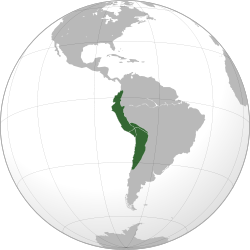
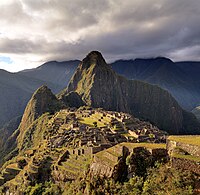


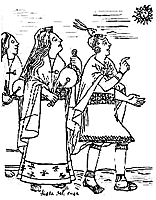
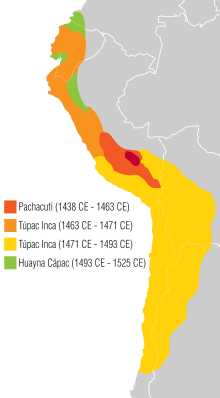

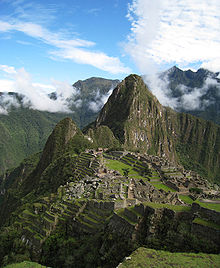

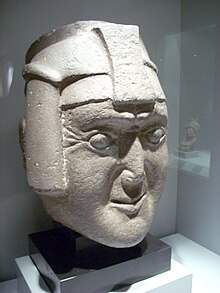

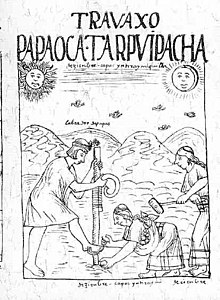

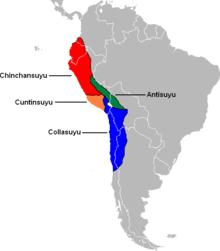


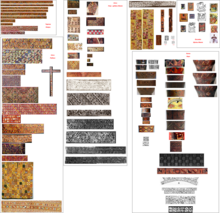





Comments
Post a Comment